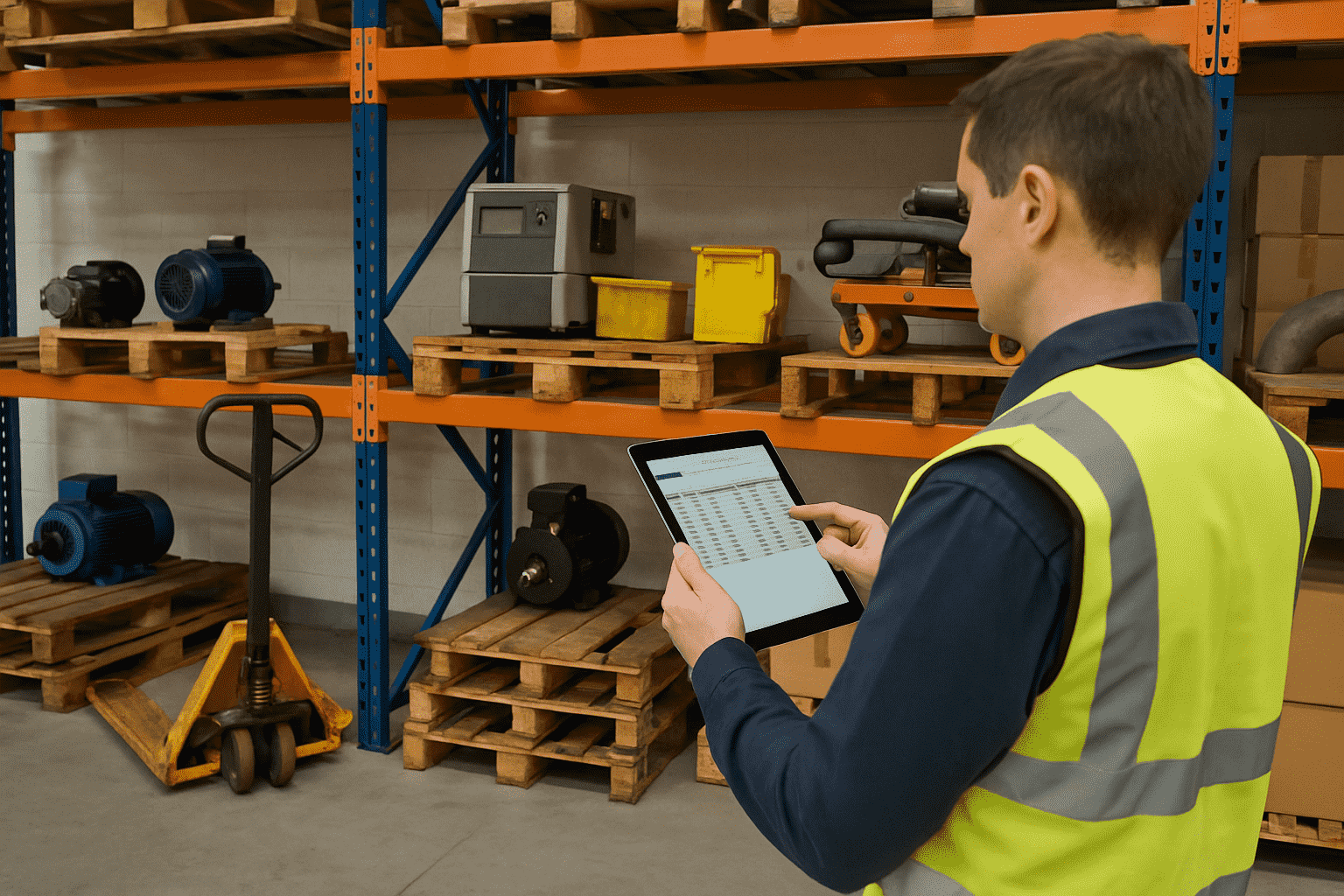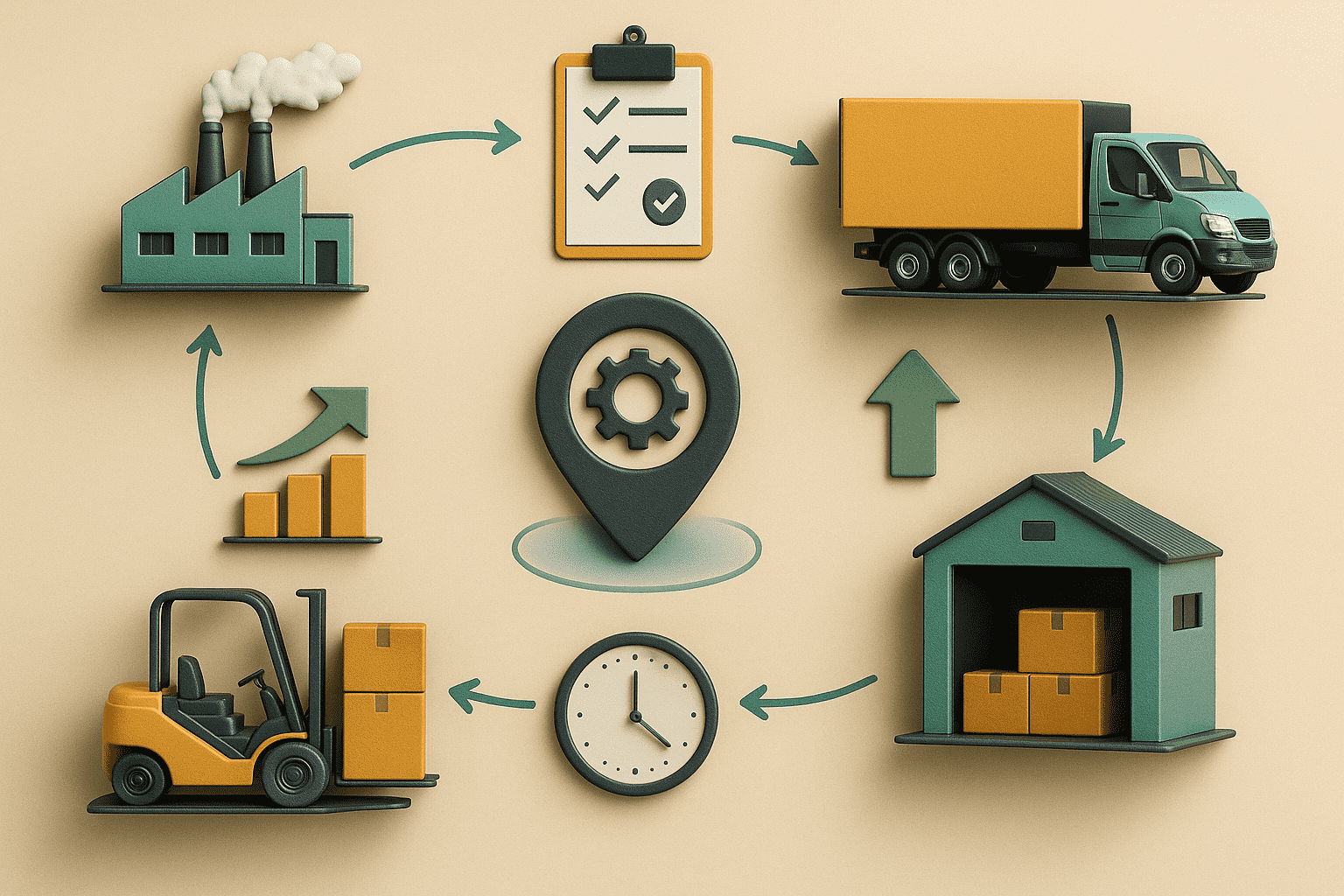9 Practical Tips to Reduce Equipment Idle Time

Equipment idle time refers to periods when assets are available, operable, but not performing productive work. It differs from downtime, which is typically caused by equipment failure or scheduled maintenance.
Idle time often stems from gaps in scheduling, misaligned workflows, or delayed resource availability. Because machines remain functional, idle time tends to be underreported—yet the costs are substantial. Prolonged idling increases fuel consumption, accelerates wear, reduces equipment lifespan, and results in lost labor productivity. These inefficiencies quietly erode asset utilization and complicate capital planning.
This article outlines practical strategies to reduce equipment idle time in complex industrial operations. If you're responsible for asset performance or operational output, these insights are designed to support smarter equipment deployment, improved utilization, and informed asset divestment decisions.
1. Optimize Scheduling and Workflow Sequencing

Misaligned schedules are a leading contributor to equipment idle time. Telematics analysis on a heavy-civil fleet found that poor coordination pushed idle rates to 40–45 % of engine-on hours. After tasks and crews were properly sequenced, idle time dropped to roughly 15 %. When tasks aren’t fully prepared or crews are delayed, machines are left waiting, consuming space, fuel, and capital without delivering output.
To minimize idle time, align work sequencing with actual equipment needs. This requires clear task dependencies, verified resource readiness, and coordinated deployment.
Use scheduling platforms that:
- Map task sequences against equipment timelines
- Identify conflicts across teams or departments
- Adjust in real time based on delays or changes
2. Improve Team Communication and Coordination

Lack of coordinated communication increases machinery idle time and disrupts operational flow. To mitigate this, establish standardized processes for sharing critical updates across all project stakeholders.
Prioritize the following actions:
- Require confirmation of worksite readiness before scheduling equipment mobilization.
- Communicate task completion and material delivery in real time to relevant teams.
- Centralize access to project schedules, task dependencies, and equipment assignments through a secure digital platform.
3. Train Operators to Minimize Unnecessary Idling

Operator practices have a direct effect on equipment idle time. Without clear guidelines and ongoing training, excessive idling can become routine, reducing asset efficiency and increasing operational costs.
To address this, take the following actions:
- Educate operators on the financial and operational impact of idle time, including fuel consumption, accelerated wear, and reduced equipment lifespan.
- Implement standard operating procedures (SOPs) that promote efficient machine use and discourage unnecessary idling.
- Establish and enforce shutdown guidelines, such as requiring engines to be turned off after a set period of inactivity, except where continuous operation is operationally justified.
4. Implement Preventive Maintenance During Planned Downtime

Unplanned failures cause the most significant periods of equipment idle time. A structured preventive maintenance (PM) program limits these surprises by using scheduled pauses—such as shift changes, material changeovers, or weekend shutdowns—as inspection and service windows.
Prioritize three actions:
- Convert idle slots into work orders:
Map OEM service intervals to your production calendar. When a line is offline, dispatch technicians for inspections, lubrication, and minor part replacements.
- Synchronize PM with production schedules:
Lock maintenance tasks into the master schedule alongside jobs and crew assignments. Shared visibility keeps operators, planners, and maintenance teams aligned and ensures machines return to service on time.
- Break the emergency-repair cycle:
Consistent PM lowers the likelihood of cascading breakdowns that idle multiple assets. Fewer emergency call-outs preserve throughput and improve asset-utilization metrics.
5. Monitor Idle Time with Telematics and Asset Tracking

Person monitoring equipment data on a rugged tablet with a stylus, standing near yellow heavy machinery. The amplio logo appears in the corner.
Reducing equipment idle time begins with precise, continuous measurement. Integrated telematics—GPS modules, IoT sensors, and engine-hour meters—deliver real-time data on engine status, location, and utilization.
Prioritize the following measures:
- Equip critical assets with telemetry:
Activate built-in telematics or retrofit GPS and engine-hour loggers on machines that lack connectivity.
- Evaluate idle patterns by asset, shift, and operator:
Use analytics dashboards to identify units or crews that consistently exceed acceptable idle thresholds.
- Configure alerts for excessive idle duration:
Establish automated notifications (for example, after ten minutes of inactivity) to prompt immediate shutdown or task reassignment.
6. Right-Size Your Equipment Fleet

Chronic equipment idle time often points to excess capacity. Surplus assets consume capital, add maintenance overhead, and lower overall utilization.
Take these actions:
- Audit asset utilization:
Compare actual engine hours to your target benchmarks. Flag machines that fall consistently below the threshold.
- Remove or redeploy low-demand units:
Liquidate idle machines, shift them to higher-need sites, or replace ownership with short-term rentals.
- Evaluate persistent “always-idle” assets:
If a machine idles more than it works, calculate the true cost of retention versus divestment.
7. Establish and Enforce Idle-Reduction Policies

Clear, documented rules turn idle-time guidelines into everyday practice. A formal policy sets expectations across shifts and sites, making it easier to measure and sustain results.
Focus on these actions:
- Set a shutdown threshold:
Specify a maximum idle period—such as five minutes—after which operators must power down unless continuous running is operationally required.
- Post visible reminders:
Place cab decals or dashboard prompts that restate the shutdown rule and the cost of non-compliance.
- Monitor and recognize adherence:
Use telematics to flag exceptions, publish monthly compliance reports, and reward teams that achieve target idle-time reductions.
8. Redeploy Idle Equipment Internally

Idle equipment in one department can often meet an immediate need in another. A structured internal-redeployment program ensures assets are used where they generate the highest return before any new capital is committed.
Implement three controls:
- Maintain an enterprise asset ledger:
Record location, utilization hours, and service status for every machine so departments can see what is available in real time.
- Create an internal request and allocation workflow:
Allow managers to request surplus equipment through a shared portal; route approvals to operations and finance to confirm suitability and cost attribution.
- Coordinate transfer logistics:
Assign responsibility for transport, installation, and updated maintenance scheduling to eliminate hand-off delays and keep accountability clear.
9. Strategic Liquidation to Eliminate Chronic Idle Time

Excess assets inflate equipment idle time metrics and absorb working capital. When utilization reports confirm that a machine is permanently underused, liquidation removes the idle hours from your fleet statistics and redeploys the asset into productive service elsewhere.
Follow three disciplined steps:
- Verify sustained redundancy:
Review multi-quarter utilization data and production forecasts to ensure demand for the unit will not return.
- Secure a market-driven valuation:
Base pricing on recent secondary-market transactions and remaining service life so the sale moves quickly and transparently.
- Engage a qualified liquidation partner:
Use a specialist that handles inspection, marketing, buyer vetting, and logistics, minimizing internal workload and shortening time-to-cash.
How Amplio Helps Reduce Equipment Idle Time

When an asset remains idle despite internal redeployment or right-sizing efforts, liquidation is the most effective next step. Amplio provides a structured, data-driven service that removes the equipment from your idle roster and converts it into capital:
Market-based asset valuation – Proprietary analytics compare your machinery against current secondary-market transactions to establish a fair, defensible price.
End-to-end liquidation management – Amplio handles inspection, documentation, compliance, listing, buyer vetting, and outbound logistics, keeping your team focused on core operations.
Curated industrial buyer network – Pre-qualified buyers receive targeted notifications, accelerating time-to-sale and ensuring the asset returns to productive use.
Transparent performance reporting – Post-sale dashboards detail recovery value, sale timeline, and cost avoidance, allowing you to quantify the reduction in idle-time carrying costs.
Contact Amplio today to eliminate chronic idle time and unlock the hidden value in your equipment fleet.